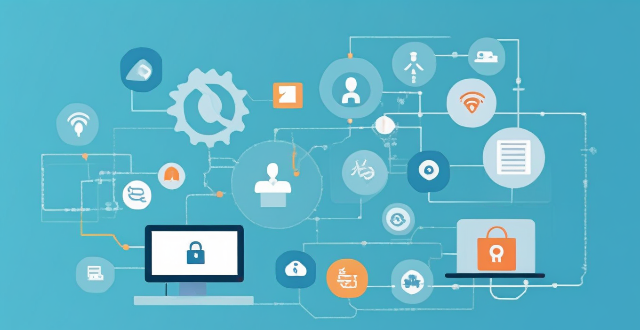The article discusses the major security concerns related to the Internet of Things (IoT), such as data privacy and confidentiality, device security, network security, physical security, and software vulnerabilities. It emphasizes the need for implementing appropriate security measures to ensure the secure deployment of IoT devices and protect sensitive information from unauthorized access.

Introduction
The Internet of Things (IoT) has become an integral part of our daily lives, with billions of devices connected to the internet. However, this rapid growth has also brought about several security concerns that need to be addressed. In this article, we will discuss some of the major security concerns related to IoT.
Major Security Concerns Related to IoT
1. Data Privacy and Confidentiality
- Data privacy is a significant concern in IoT as sensitive information such as personal data, location, and user behavior can be collected and transmitted over the network.
- Attackers can exploit vulnerabilities in IoT devices to gain unauthorized access to sensitive information.
- Encryption techniques should be used to protect data confidentiality and prevent unauthorized access.
2. Device Security
- IoT devices are often low-powered and have limited processing capabilities, making them vulnerable to attacks.
- Attackers can exploit vulnerabilities in IoT devices to gain control over them or launch DDoS attacks.
- Regular updates and patches should be applied to IoT devices to ensure their security.
3. Network Security
- IoT devices are connected to the internet, making them susceptible to network-based attacks such as man-in-the-middle attacks and eavesdropping.
- Attackers can intercept communication between IoT devices and their servers, leading to data breaches and unauthorized access.
- Network encryption and secure communication protocols should be used to protect IoT devices from network-based attacks.
4. Physical Security
- IoT devices are often deployed in remote locations, making them vulnerable to physical attacks such as tampering and theft.
- Attackers can physically access IoT devices and modify their firmware or hardware to gain unauthorized access or disrupt their functionality.
- Physical security measures such as tamper-resistant packaging and secure storage should be implemented to protect IoT devices from physical attacks.
5. Software Vulnerabilities
- IoT devices run on software that may contain vulnerabilities that can be exploited by attackers.
- Attackers can exploit software vulnerabilities to gain unauthorized access to IoT devices or launch attacks on other systems.
- Regular software updates and patches should be applied to IoT devices to fix known vulnerabilities and prevent new ones from being exploited.
Conclusion
In conclusion, IoT has brought about numerous benefits but also poses significant security concerns that need to be addressed. By implementing appropriate security measures such as data encryption, regular updates, secure communication protocols, physical security measures, and software patching, we can ensure the secure deployment of IoT devices and protect sensitive information from unauthorized access.